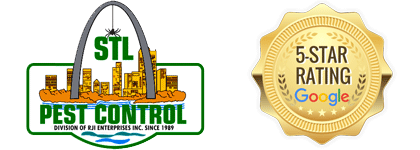Termite Exterminator St. Louis
The leading Termite Exterminator in St. Louis You Can Count On
Welcome to STL Pest Control, your premier destination for comprehensive Termite Control Services in St. Louis. As the leading Termite Exterminator in St. Louis, we understand the distress and damage termites can cause to your home or business. That’s why we’re dedicated to providing effective, reliable solutions tailored to eradicate termite infestations and prevent future occurrences. With STL Pest Control, you can trust our expert team to protect your property with the utmost care and professionalism, ensuring peace of mind against these destructive pests.
What are subterranean termites?
Subterranean termites are known for causing significant damage compared to other termite species. These termites create unique structures called “mud tubes,” which they use for accessing food and shielding themselves from the external environment. Their constant feeding on wood, occurring every hour of the day and every day of the week, involves using their serrated jaws to break off tiny wood pieces incrementally. This relentless activity can lead to severe damage to buildings over time, even to the point of complete structural failure. These termites pose a widespread threat to homeowners, as they are present in all states of the U.S., except Alaska.
What do subterranean termites look like?
Subterranean termites are categorized into three primary groups, each with distinct physical characteristics: reproductives, workers, and soldiers.
Reproductives are subdivided into the king, queen, and alates (also known as swarmers). The queen, vital for the colony’s expansion, is the largest, while the king is notably smaller. Alates are characterized by their elongated bodies, ranging from dark brown to almost black, and semi-transparent wings with a slightly milky hue. They are typically ¼ to ½ inch long, and their wings may exhibit a few sparse hairs.
In contrast, workers and soldiers lack wings. Workers are smaller, around ¼ inch or less, with a light, cream-colored body. They possess tiny jaws used for wood consumption and material transportation. Soldiers are identifiable by their prominent mandibles and have a unique rectangular head shape. Their bodies are broader and flatter. While their bodies are a creamy white similar to workers, their heads are a darker, brownish color.
History Of Termites
Termites are eusocial insects that are classified at the taxonomic rank of infraorder Isoptera, or as epifamily Termitoidae within the cockroach order Blattodea. Termites were once classified in a separate order from cockroaches, but recentphylogenetic studies indicate that they evolved from close ancestors of cockroaches during the Jurassic or Triassic. However, it is possible the first termites emerged during the Permian or even the Carboniferous. Approximately 3,106 species are currently described, with a few hundred more left to be described. Although these insects are often called whiteants, they are not ants.
Like ants and some bees and wasps, which are in the separate order Hymenoptera, termites divide labour among castes that consist of sterile male and female “workers” and “soldiers”. All termite colonies have fertile males called “kings” and one or more fertile females called “queens”. Termites mostly feed on dead plant material and cellulose, generally in the form of wood, leaf litter, soil, or animal dung. Termites are major detritivores, particularly in the subtropical and tropical regions, and their recycling of wood and plant matter is of considerable ecological importance.
Termites are among the most successful groups of insects on Earth, colonising most landmasses except for Antarctica. Their colonies range in size from a couple of hundred individuals to enormous societies with several million individuals. Termite queens also have the longest lifespan of any insect in the world, with some queens living up to 50 years. Each individual termite goes through an incomplete metamorphosis which, unlike the complete metamorphosis.
Found in ants, proceeds through egg, nymph and adult stages. Colonies are described as superorganisms because the termites form part of a self-regulating entity: the colony itself.
Termites play a vital role in the ecosystem by recycling waste material such as dead wood, faeces and plants. Termites are a delicacy in the diet of some human cultures and are used in many traditional medicines. However, several hundred species are economically significant as pests that can cause serious damage to buildings, crops or plantation forests. Some species, such as the West Indian drywood termite (Cryptotermes brevis), are regarded as invasive species, having been introduced to countries to which they are not native.
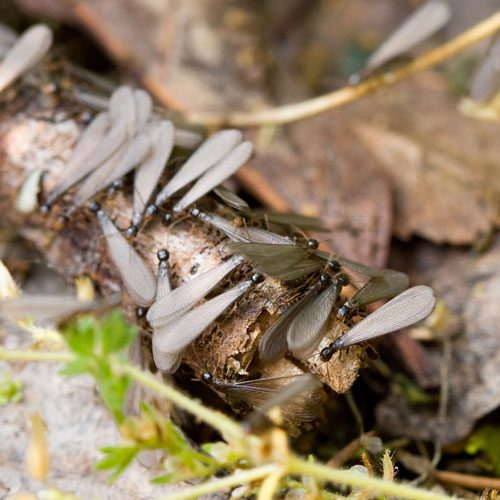
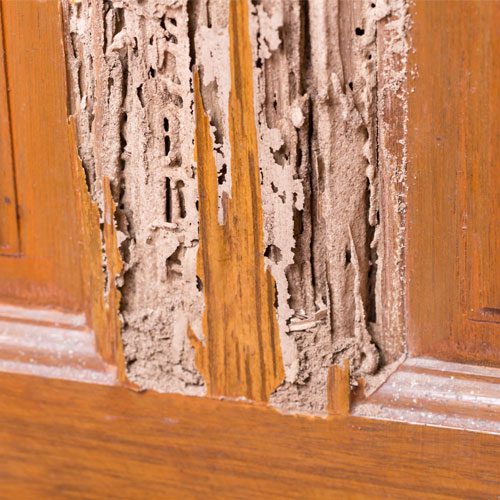
Detection
Although you may not always see direct evidence of a termite infestation, that doesn’t mean you should not be concerned about getting an infestation. There are signs that you can look for that are great indicators whether or not you have an infestation. Sagging floors, holes in wood work, and hollow parts of the foundation of your house are all indicators of a termite infestation. Be vigilant about these signs and you can catch it early saving yourself time, money, and the headache of replacing everything that has been destroyed by termites
Subterranean Termites Facts
1: Widespread Habitat: Subterranean termites are the most common termite species in the United States, found in every state except Alaska. Their prevalence is due to their ability to adapt to various climates and environments.
2: Colony Structure: A subterranean termite colony is highly organized with a caste system, including the queen, king, workers, soldiers, and reproductives (alates). Each caste has a specific role, with the queen’s primary purpose being to lay thousands of eggs.
3: Wood Consumption: These termites are known for their wood-eating habits, feeding on cellulose-based materials. This can lead to significant structural damage to buildings, as they can silently eat away the wood from inside.
4: Mud Tubes: Subterranean termites build distinctive mud tubes for protection from predators and to maintain a humid environment. These tubes are often a visible sign of termite infestation.
5: Swarming Behavior: Reproductive alates (swarmers) emerge from the colony to mate and start new colonies. This swarming usually occurs in spring and is often the first visible sign of a termite infestation in a home.
Subterranean Termites FAQ’s
Q: How can I identify a subterranean termite infestation?
A: Look for mud tubes along the foundation of your home, hollow-sounding wood, and swarms of winged insects or discarded wings.
Q: What kind of damage can subterranean termites cause?
A:They can cause extensive damage to wooden structures and property, sometimes leading to structural failure if left untreated.
Q: Are subterranean termites visible to the naked eye?
A:Yes, especially the winged reproductives, which are larger and often seen during swarming season.
Q: How can I protect my home from subterranean termites?
A:Regular inspections, reducing moisture around the home’s foundation, and removing any wood-to-ground contact are effective preventative measures.
Q: What is the best treatment for subterranean termites?
A:Professional pest control options include soil treatments, bait systems, and wood treatments, depending on the severity and location of the infestation.
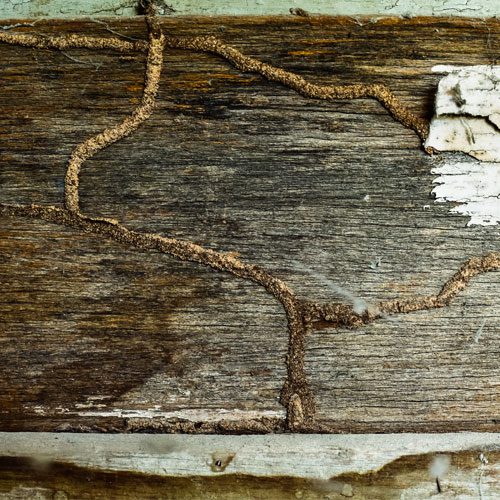


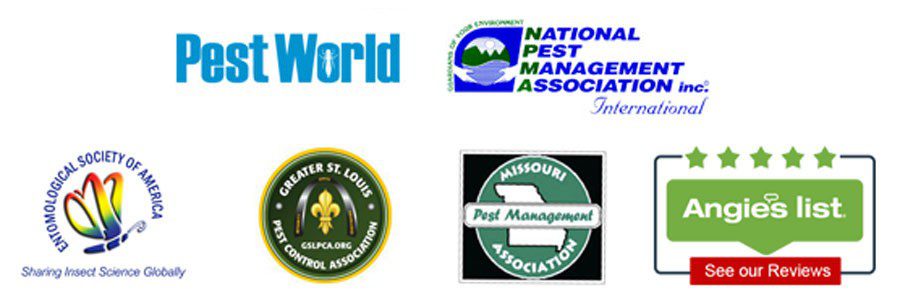
Our Office

Quick links
Services
Contact
Service Areas - We service all of St. Louis City and St. Louis County areas
Affton, MO. 63123 | Arnold, MO. 63010 | Ballwin, MO. 63021, 63011 | Barnhart, MO. 63012, 63057 | Berkeley, MO. 63042, 63114, 63121, 63134, 63140 | Brentwood, MO. 63144 | Bridgeton, MO. 63074 | Chesterfield, MO. 63017 | Clayton, MO. 63105 | Cottleville, MO. 63304, 63338, 63376 | Crestwood, MO. 63126 | Creve Couer, MO. 63146 | Dardenne Prairie, MO. 63368 | Des Peres, MO. 63131 | Earth City, MO. 63044, 63045 | Ellisville, MO. 63011, 63017 | Eureka, MO. 63025, 63069 | Fenton, MO. 63026 | Ferguson, MO. 63033 | Florissant, MO. 63033 | Frontenac, MO. 63131 | Glencoe, MO. 63005, 63038, 63040 | Grover, MO. 63040 | Hazelwood, MO. 63042, 63134 | High Ridge, MO. 63049, 63069, 63051 | House Springs, MO. 63051 | Imperial, MO. 63012 | Jennings, MO. 63136 | Kirkwood, MO. 63122 | Ladue, MO. 63124 | Lemay, MO. 63125 | Manchester, MO. 63021 | Maplewood, MO. 63117 | Maryland Heights, MO. 63043 | Mehlville, MO. 63125, 63129 | Normandy, MO. 63133, 63135 | O’Fallon, MO. 63366, 63368 | Oakville, MO. 63129 | Olivette, MO. 63132 | Overland, MO. 63114 | Pagedale, MO. 63133, 63135 | Richmond Heights, MO. 63117 | Shrewsbury MO. 63119 | St. Ann, MO. 63074 | St. Charles, MO. 63301, 63302, 63303 | St. Louis City, MO. | St. Louis County, MO. | St. Louis, MO. | St. Peters, MO. 63304, 63376 | Sunset Hills, MO. 63127 | Town & Country, MO. 63141 | University City, MO 63130 | Valley Park, MO. 63088 | Webster Groves, MO. 63119 | Wildwood, MO. 63005, 63040, 63025, 63038, 63069 |
